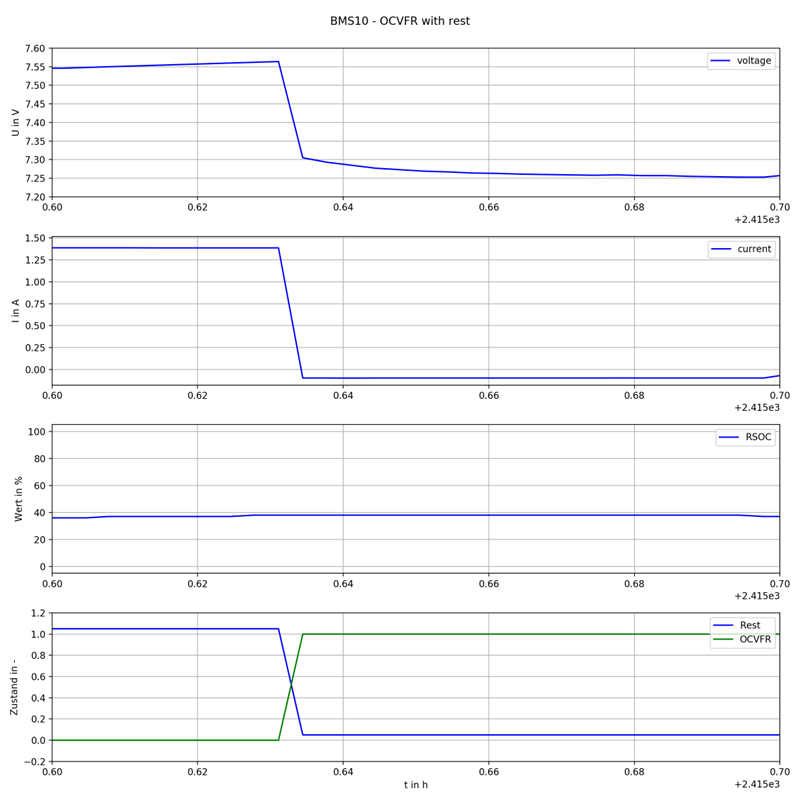Part Number: BQ40Z50-R3-DEVICE-FW
Hi!
Our battery pack is based on the bq40z50-r3 (2 cells in series, Chem-ID 0x2158). After a few partial charge and discharge cycles (between 5.90 and 7.66V) we noticed that the RSOC value is drifting. We added a rest phase (at 6V, 4 hours) later on because we hoped that an OCV measurement would limit the effect oft he drift. But unfortunately the OCVFR bit is set throughout and no OCV measurements are taken.
If I understood correctly, the values Vqdis_min and Vqdis_max in chemdat.txt define the location of the flat region. Since the values are identical (Vqdis_min = 3699, Vqdis_max = 3699), I suspect that no flat region exists for this chem id. However, in our tests, the OCVFR flag is set anyway, which is apparently why there are no OCV measurements during the rest phase.
In the Technical Reference I found the following about OCVFR:
- The GaugingStatus()[OCVFR] flag indicates if the cell voltage is inside this flat region.
- Impedance Track Configuration Options: An OCV reading is taken when a dV/dt condition is met. This is not the case if charging stops within the flat voltage region. By default, this flag is set. The bq40z50-R3 device will take a 48-hour wait before taking an OCV reading if charge stops below the FlatVoltMax. A discharge will not cancel this 48-hour wait. The 48-hour wait will only be cleared if charging stops above the FlatVoltMax level. Setting this flag to 0 removes the 48-hour wait requirement, and OCV is taken when the dV/dt condition is met. Removing the 48-hour requirement can be useful sometimes to reduce test time during evaluation.
The wording in 1) seems to me to be somewhat misleading. The behavior obviously corresponds to 2).
Under what conditions is the OCVFR bit in IT Status cleared? Interrupting the charging process for a few seconds at a voltage above Vqdis_max did not cause this.
Can OCVFR be deactivated in the Impedance Track Configuration Options at Chem-ID 0x2158 OCVFR without negative side effects? Or is this not recommended?


Best regards,
Bernhard


